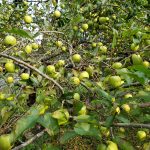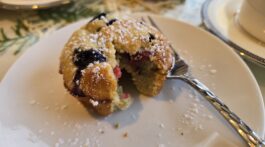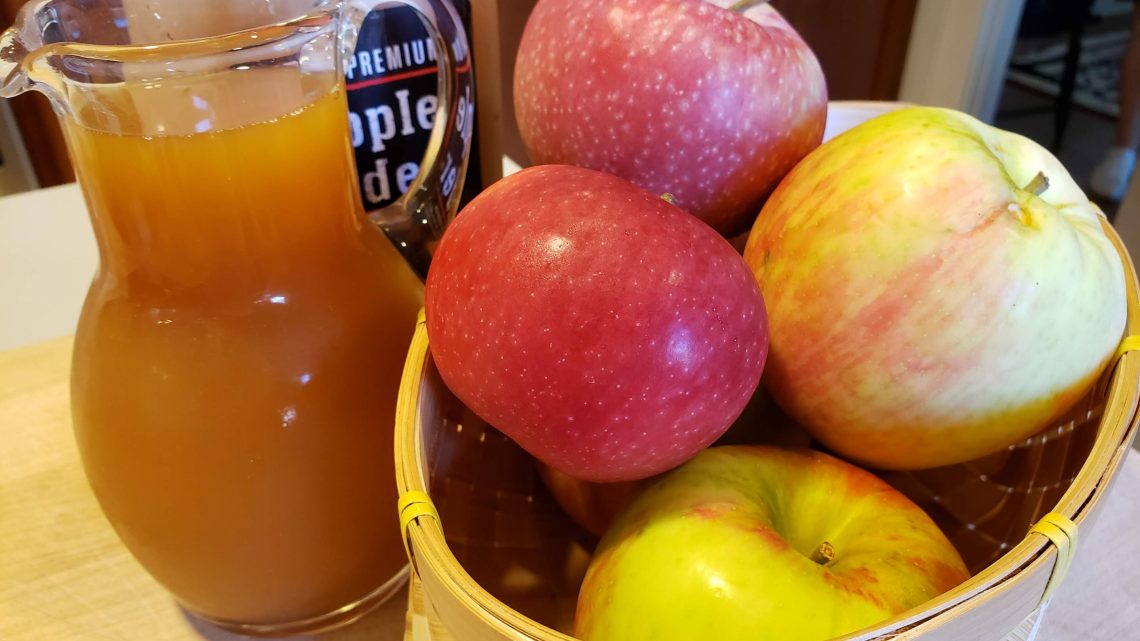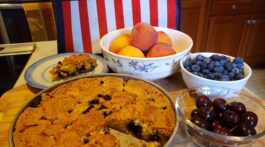 All of a sudden, apples are everywhere. You can have your pumpkin spice whatever, squash in its many delicious colors and flavors, or slow-simmered stews. But a crisp, just-picked apple — whether eaten solo, baked into a dessert, pressed into cider, or caramelized into a savory dish — defines this season for me.
All of a sudden, apples are everywhere. You can have your pumpkin spice whatever, squash in its many delicious colors and flavors, or slow-simmered stews. But a crisp, just-picked apple — whether eaten solo, baked into a dessert, pressed into cider, or caramelized into a savory dish — defines this season for me.
With evocative names like Honeycrisp or Jonagold, exotic names like Mutsu or Fuji, or old friends including McIntosh, Delicious, and Macoun, the colorful fruits are stacked up at farmers markets, roadside stands, and supermarkets. As the season progresses on into November, the early varieties are displaced by newcomers.
We’re lucky to live in a place where apples are a local crop.
 For a savory dish, apples and pork are made for each other. The sweet-tart fruit is a perfect foil for the rich meat. You need go no further than Givoanni’s Restaurant in Darien to experience the magic.
For a savory dish, apples and pork are made for each other. The sweet-tart fruit is a perfect foil for the rich meat. You need go no further than Givoanni’s Restaurant in Darien to experience the magic.
During September, the “How do you like these apples!” menu showcases apples — both savory, sweet, and alcoholic. The grilled Berkshire pork chops (yes, there are two) are dressed with chutney-caramelized apples. Inch-thick, well-charred, yet moist inside, the perfectly cooked chops are generously topped with the flavorful apple compote.
The old-school Italian steakhouse sets aside its red meat focus for the apple menu. Scallops wrapped in apple-smoked bacon ($14) and a fall salad with sliced Granny Smiths, nuts, dried raisins, and a cider vinegar dressing (14) are starters. In addition to the excellent pork chops (28), there’s a French cut chicken breast filled with a savory apple stuffing (25). Portions are generous.
 Start off with their tasty take on mulled cider with bourbon (12) or a green apple martini (12). Finish (if you have room) with warm apple crisp topped with ice cream (7). Service is friendly and professional in the cozy wood-paneled dining room.
Start off with their tasty take on mulled cider with bourbon (12) or a green apple martini (12). Finish (if you have room) with warm apple crisp topped with ice cream (7). Service is friendly and professional in the cozy wood-paneled dining room.
I wish more restaurants had seasonal menus like this. Giovanni’s will only run for September.
It goes without saying that apples make superb desserts: pies, tarts, crisps, galettes, and even cakes. Baking apples in pastry is very rewarding. Ask Woodland Farm at the New Canaan Farmers Market for pie apples. They’ll pick out a mixed bag of fruit — sweet, tart, firm, and flavorful — to make any dessert exceptional. I insist that Marsha bake at least one apple crisp every fall.
No time or inclination to bake your own? Michelle’s Pies on Main Avenue in Norwalk offers eight varieties of award-winning fresh-baked apple pies — apples only or with added raspberries, cranberries, or blueberries.
 Fresh-pressed cider is another reason to celebrate the apple harvest. Dan Beardsley at Beardsley’s Cider Mill in Shelton presses the fruit from his own orchards into a refreshing sweet-tart cider. The mix of apples in the blend is posted on a chalkboard and changes with the harvest.
Fresh-pressed cider is another reason to celebrate the apple harvest. Dan Beardsley at Beardsley’s Cider Mill in Shelton presses the fruit from his own orchards into a refreshing sweet-tart cider. The mix of apples in the blend is posted on a chalkboard and changes with the harvest.
If you don’t want to trek to Shelton, look for Rogers Orchards or Farmer’s Cow brands. The best ciders are not just sweet, but have a tart zing to wake up your taste buds.
 Cider season also means a new crop of cider donuts. Most apple farms and stands offer them. Beardsley’s are top notch — worth the trip. The ones at Silverman’s Farm are very appley. Locally, my go-to is Stew Leonard’s. Bet you can’t eat just one.
Cider season also means a new crop of cider donuts. Most apple farms and stands offer them. Beardsley’s are top notch — worth the trip. The ones at Silverman’s Farm are very appley. Locally, my go-to is Stew Leonard’s. Bet you can’t eat just one.
We don’t fry at home, so no homemade donuts, but Marsha found a recipe for an Apple Cider Donut cake. Made in a bundt pan, it even had a hole in the center. With cinnamon sugar and a cider glaze, it was kid tested — just as popular as any donut.
 Although not native to America, apples were a staple of subsistence farm life. Apple trees were a common sight in farmyards — used for baking, but most importantly for cider making. Back then, apples were tart, tannic, and thick skinned; not great for eating, but perfect for fermenting. There was usually a barrel of the easily made beverage in the cellar.
Although not native to America, apples were a staple of subsistence farm life. Apple trees were a common sight in farmyards — used for baking, but most importantly for cider making. Back then, apples were tart, tannic, and thick skinned; not great for eating, but perfect for fermenting. There was usually a barrel of the easily made beverage in the cellar.
Hard cider is having a resurgence. It’s been popularized by sweet brands like Angry Orchard. Small-production artisanal makers are perfecting dry ciders in the traditional style. Most restaurants have a few on the drinks list. Give them a try.
 Traditional cider-makers seek out those old farmhouse trees. The almost inedible apples (called “spitters”) make the best cider. Rather than let the apples fall and attract bees, tree owners are happy to have cider makers come and gather them up.
Traditional cider-makers seek out those old farmhouse trees. The almost inedible apples (called “spitters”) make the best cider. Rather than let the apples fall and attract bees, tree owners are happy to have cider makers come and gather them up.
As apples moved from farmhouse cider to treats to eat, apple production was shifted to large orchards. Southington, Connecticut is at the heart of Connecticut’s Apple Valley. Apple production continues there today at Rogers Orchards where the family has been farming since 1809.
Will an apple a day keep the doctor away? I couldn’t say. But with all these delicious ways to enjoy them, why not give it a try?
Frank Whitman can be reached at NotBreadAloneFW@gmail.com.












No Comment